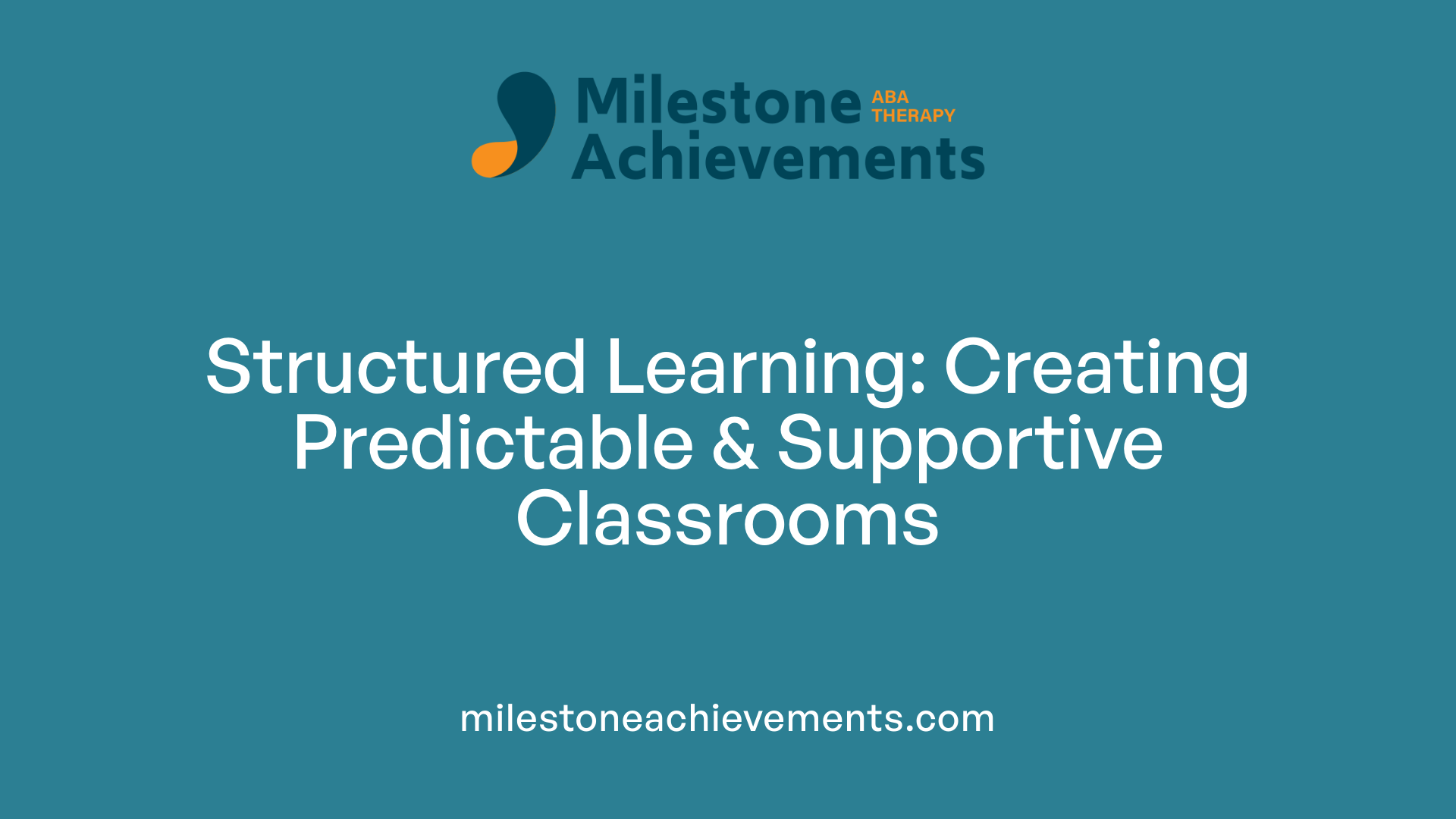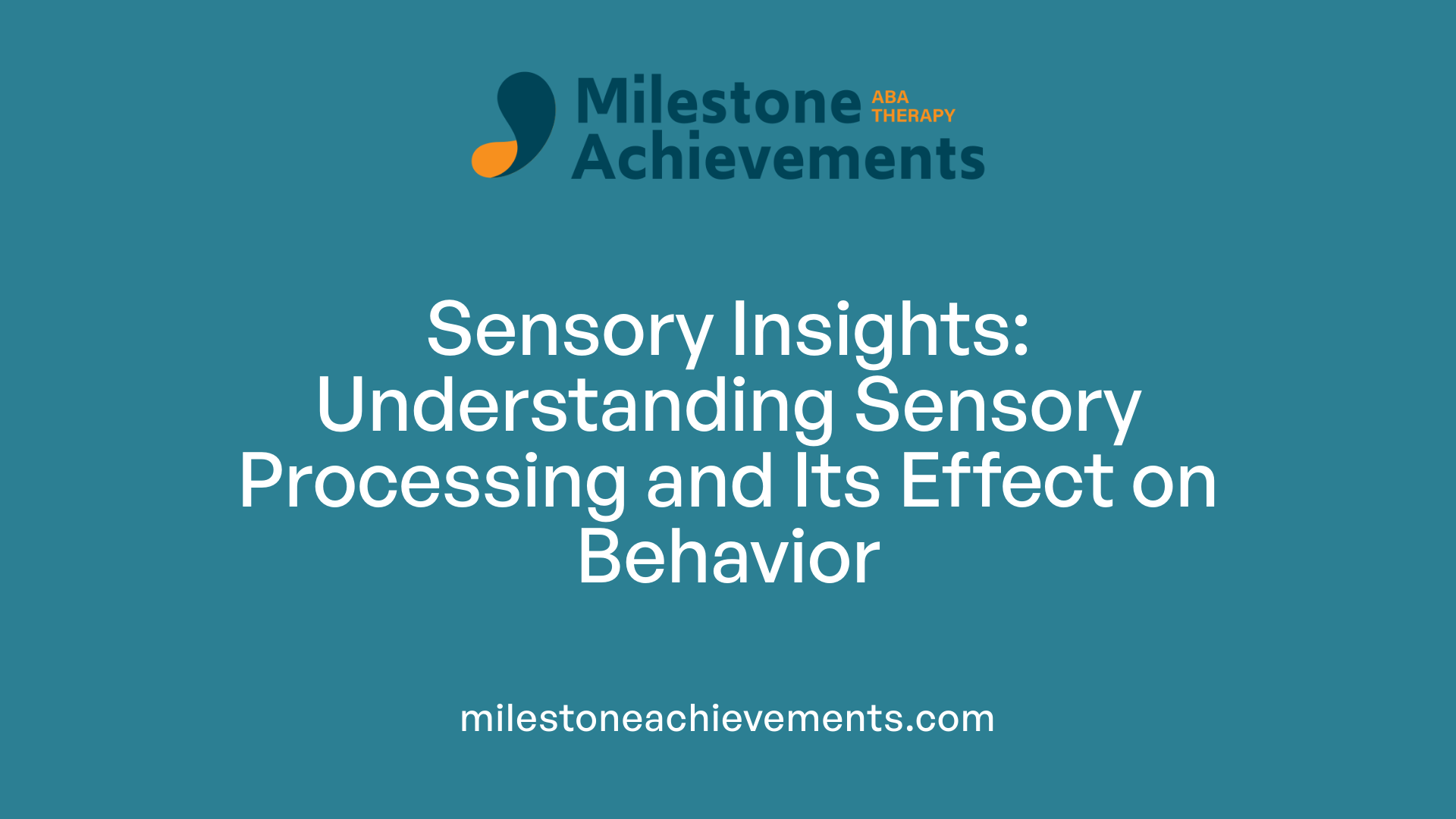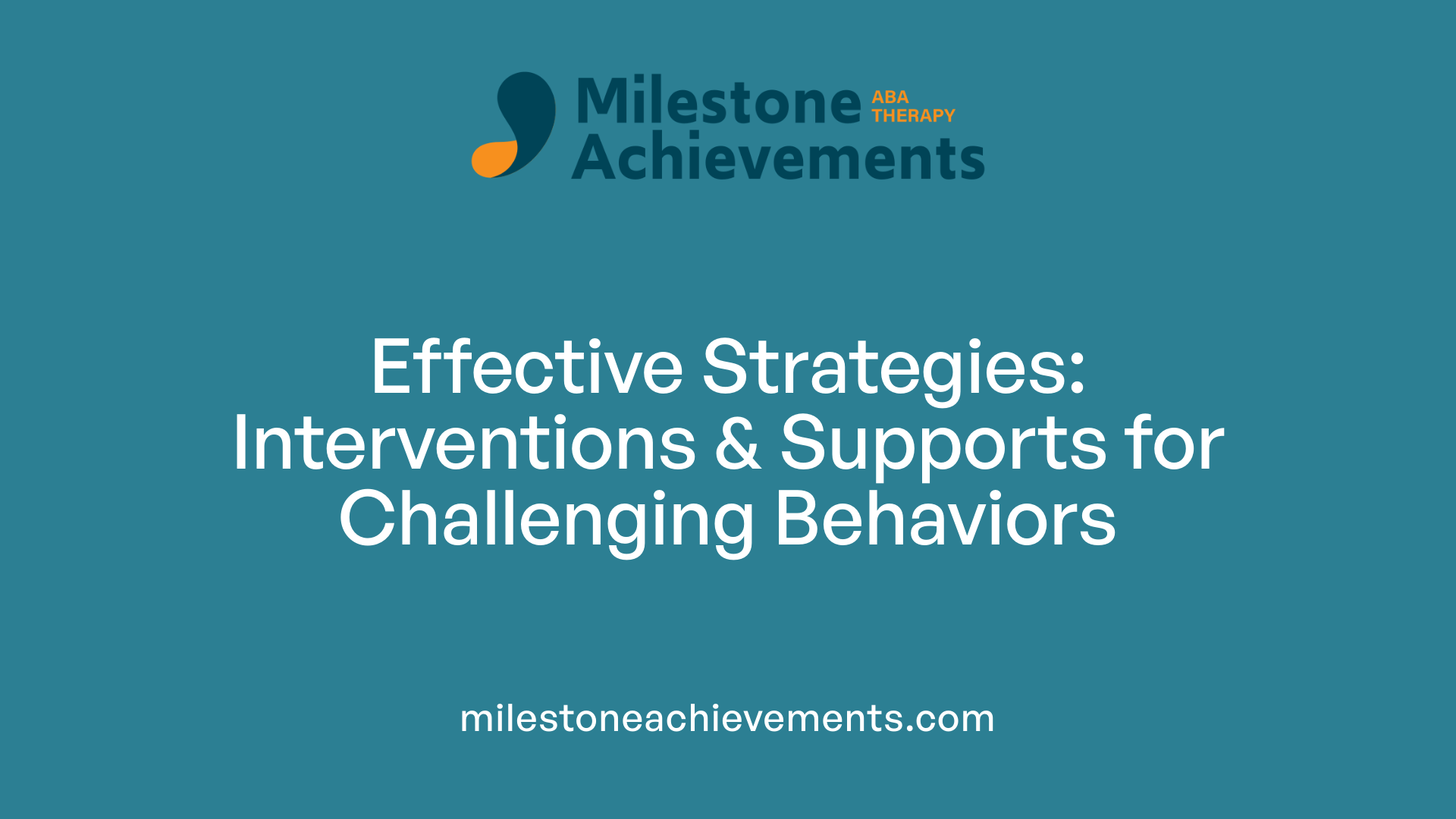
Classroom Behavioral Challenges in Autism
Creating Supportive Classrooms for Students with Autism
Understanding and Addressing Behavioral Challenges in Autism in Educational Settings
Students with autism spectrum disorder (ASD) often face unique behavioral and social-emotional challenges in the classroom, which can hinder their learning and social integration. To foster inclusive and effective learning environments, it is essential for educators and caregivers to understand the nature of these behaviors, recognize their functions, and implement strategic interventions. This article explores common classroom behaviors exhibited by students with autism, the challenges they face, and evidence-based strategies to prevent and manage challenging behaviors, ensuring meaningful participation and progress for these students.
Recognizing Behavior as Communication in Autism
What are common classroom behaviors exhibited by students with autism?
Students with autism often display a variety of behaviors that serve as means to communicate their needs, frustrations, or sensory preferences. Common behaviors include stimming, such as rocking, hand-flapping, or repeating words, which help self-regulate and process sensory input. Meltdowns may occur due to sensory overload, frustration, or difficulty managing changes in routine.
They also frequently demonstrate challenges in understanding social cues and norms of conversation, which can manifest as difficulty sharing interests, limited eye contact, or a lack of response to their name. Communication difficulties are prevalent, with some students relying on augmentative and alternative communication (AAC) devices or visual supports like schedules, social stories, and cue cards.
Sensory sensitivities are also common, leading to behaviors such as covering ears when sounds are overwhelming, avoiding textures, lights, or crowded spaces, and seeking sensory input through repetitive movements or seeking specific textures.
Support strategies include establishing predictable routines and providing sensory-friendly spaces for calming. Using visual supports, clear language, and encouraging positive peer interactions foster a more inclusive environment. Recognizing these behaviors as forms of communication allows educators and caregivers to better meet students’ individual needs and promote their social and emotional development.
Creating Structured and Supportive Classroom Environments

What are the main challenges faced by autistic students in educational settings?
Autistic students often encounter several hurdles in school environments that can affect their learning and social development. Difficulties with social interaction and understanding social cues can lead to challenges in building peer relationships and participating in group activities. Sensory processing issues are common, with typical school stimuli like bright lights, loud sounds, and strong smells potentially overwhelming them, causing anxiety or distractibility.
Communication difficulties are also prevalent, including delays in speech, limited gestures, and trouble understanding figurative language, which can hinder classroom interaction. Many students struggle with executive functioning skills such as planning, organization, and switching between tasks, impacting their ability to complete assignments or follow routines. Motor skills can pose additional barriers, making handwriting or movement activities challenging.
Disruptions to routines or unsupportive environmental factors often increase stress, leading to behaviors that can be misunderstood or challenging for teachers. To address these issues, educators must incorporate visual supports, structured routines, and sensory tools that cater to individual needs, creating a classroom climate conducive to success.
How can educators prevent and manage challenging behaviors in children with autism?
Preventing and managing behaviors such as aggression, self-injury, or tantrums involves a thorough understanding of each child's unique triggers and communicative functions. Teachers should focus on teaching alternative communication methods, like picture exchange or sign language, and reinforce these skills with positive feedback.
Creating a predictable environment through visual supports, social narratives, and clear routines helps reduce uncertainty and anxiety. Developing individualized behavior plans and consulting with behavior specialists, such as Board Certified Behavior Analysts (BCBAs), ensures strategies are tailored effectively.
Sensory accommodations like noise-canceling headphones, calming corner spaces, or visual schedule cues can minimize sensory overload.
Offering choices empowers students and promotes independence, while teaching self-regulation techniques—such as scheduled breaks and waiting strategies—help students manage emotions and impulses.
Fostering a respectful atmosphere through positive language, modeling appropriate behavior, and encouraging peer interactions can also play a crucial role in decreasing challenging behaviors. Through these comprehensive approaches, educators can create a supportive setting that nurtures growth, reduces frustration, and enhances engagement for students with autism.
Strategies for a structured and sensory-friendly classroom
Implementing routines is essential in providing stability and predictability, which helps lessen anxiety for autistic students. Visual schedules, step-by-step task cues, and consistent daily procedures clarify expectations and support independence.
Visual supports such as cue cards, social stories, and emotion charts simplify understanding and communication. These tools can be used to teach students when and how to request breaks, use safe spaces, or express emotions, fostering self-awareness and regulation.
Providing a designated sensory-friendly space or calm corner allows students to retreat when overwhelmed—equipped with calming toys, soft lighting, and noise reduction materials. Visual supports help students recognize and use these safe zones effectively.
Creating an inclusive classroom involves balancing structure with flexibility. Using visual supports and sensory tools not only helps students navigate their environment more comfortably but also encourages positive behaviors and social interactions.
| Strategies | Implementation Examples | Purpose |
|---|---|---|
| Establishing routines | Visual schedules, consistent daily activities | Reduce anxiety, promote independence |
| Visual supports and cue cards | Emotion charts, social stories, picture request cards | Enhance communication, teach self-regulation |
| Sensory-friendly spaces | Calm corner, soft lighting, sensory toys | Support sensory processing and self-soothing |
By incorporating these elements, classrooms can better support autistic students, making learning accessible, engaging, and positive.
Understanding Sensory Processing and Its Impact on Behavior

What are common classroom behaviors exhibited by students with autism?
Students with autism often show a variety of behaviors linked to their sensory processing differences. These behaviors include repetitive movements like hand-flapping, rocking, or spinning, which serve as self-stimulatory activities, known as stimming. They may experience meltdowns or aggressive outbursts when overwhelmed by sensory inputs such as loud noises, bright lights, or unfamiliar textures.
In addition, these students may struggle with social cues and conversational norms, leading to difficulties in interaction. They might also have limited speech or rely on alternative communication methods like AAC devices. Classroom behaviors related to sensory sensitivities often involve covering their ears to block out noise, avoiding certain textures or visual stimuli, and seeking additional sensory input through movements or tactile activities.
Supporting students with these behaviors requires creating a predictable environment with structured routines and visual supports like schedules and social stories. Designating sensory-friendly spaces where students can calm themselves reduces stress. Using simple, clear language and fostering positive peer interactions further helps integrate students with autism into the classroom.
By understanding the connection between sensory sensitivities and these behaviors, educators can better accommodate students, promoting their learning, emotional health, and social development within an inclusive classroom setting.
Interventions and Supports for Challenging Behaviors

How can educators prevent and manage challenging behaviors in children with autism?
Preventing and managing challenging behaviors in students with autism involves a comprehensive understanding of what triggers these behaviors and why they occur. Educators should start by observing and analyzing behaviors to identify their functions — whether they serve as communication, a way to seek sensory input, or an attempt to escape an undesirable situation.
A foundational step is establishing clear, consistent routines and visual supports. Picture schedules, social stories, and cue cards can help students understand expectations and transitions, reducing anxiety and confusion. Creating a predictable environment promotes safety and confidence, often decreasing the occurrence of disruptive behaviors.
Implementing individualized support strategies is essential. Positive Behavior Support (PBS) plans are designed to address each student’s unique needs by teaching alternative, appropriate ways to communicate or meet sensory needs. Collaborating with behavior specialists such as Board Certified Behavior Analysts (BCBAs) can optimize these plans and ensure they are effectively tailored.
Sensory needs play a significant role in behavior regulation for children with autism. Providing sensory accommodations—such as noise-canceling headphones, sensory breaks, or a designated calming space—can prevent escalation triggered by sensory overload.
Another effective approach involves teaching self-regulation skills. Strategies like scheduled breaks, mindfulness exercises, and waiting techniques equip students with tools to manage their emotions and reactions independently.
Offering choices and increasing student control over their environment fosters autonomy and reduces frustration. When children feel empowered to make decisions, they are more engaged and less likely to exhibit negative behaviors.
Finally, building a respectful classroom climate through modeling positive interactions, encouraging social skills, and promoting peer support contributes to reducing behavioral problems. Incorporating these strategies creates a nurturing environment where all students can thrive and develop healthy communication skills.
| Strategy | Implementation Examples | Purpose |
|---|---|---|
| Visual Supports | Picture schedules, cue cards | Reduce anxiety, clarify routines |
| Individualized Behavior Plans | Positive Behavior Support | Address specific behaviors effectively |
| Sensory Accommodations | Noise-canceling headphones, fidget tools | Address sensory sensitivities |
| Self-Regulation Teaching | Breaks, waiting strategies, calming techniques | Manage emotions, increase independence |
| Student Choice | Providing options for activities or breaks | Increase autonomy, reduce frustration |
| Positive Reinforcement | Praise, tangible rewards | Strengthen desired behaviors |
By integrating these strategies, educators can create a supportive classroom that minimizes challenging behaviors and promotes positive social and communication development for students with autism.
Role of Behavior Specialists and Assessment Strategies

What are common classroom behaviors exhibited by students with autism?
Students with autism display a range of behaviors that can challenge typical classroom settings. Common behaviors include repetitive movements, known as self-stimulatory actions or stimming, such as hand-flapping, rocking, or repeating sounds or words. Sensory overload may trigger meltdowns or emotional outbursts, especially when students are overwhelmed by loud noises, bright lights, or certain textures.
Many students struggle to interpret social cues, which can result in difficulties engaging in conversations or understanding peer interactions. Communication challenges may manifest as limited speech, use of gestures, or reliance on alternative communication devices like AAC. These students often benefit from visual supports like schedules, social stories, and cue cards that clarify routines and expectations.
Sensory sensitivities are frequent and can lead to behaviors like covering ears, avoiding specific textures or lights, or seeking additional sensory input through repetitive movements or touch-seeking. Incorporating tactile toys, creating sensory-friendly spaces, and providing predictable routines help support these behaviors. Recognizing these common patterns is vital for creating an inclusive classroom that promotes both learning and emotional stability.
How can behavioral functions be identified and addressed?
Understanding why a behavior occurs is essential to managing it effectively. Functional Behavioral Analysis (FBA) is a comprehensive assessment tool that helps identify the causes and functions behind behaviors. This process involves interviews with caregivers and teachers, direct observation of the student, and sometimes experimental manipulations known as functional analysis.
Behaviors often serve specific functions, such as automatic reinforcement where the behavior provides sensory satisfaction—like hand-flapping for stimulation. Alternatively, behaviors like leaving the classroom or shouting may serve to gain attention or escape an unpleasant situation.
Once the function is known, tailored strategies can be developed. These include teaching students alternative ways to communicate their needs, providing appropriate sensory input, or modifying the environment to reduce triggers. Collaborating with behavior specialists ensures interventions are guided by best practices and are adaptable to each student. Continuous monitoring and adjusting strategies help ensure lasting success in behavior management.
Collaboration with Behavior Experts
Working alongside behavior specialists offers critical support in designing effective interventions for students with autism. These professionals conduct detailed observations, help interpret FBAs, and recommend individualized plans based on the student’s needs. Their expertise ensures that strategies are evidence-based and ethically implemented, fostering positive change.
A team approach, including teachers, therapists, psychologists, and family members, promotes consistency and helps address complex behaviors comprehensively. Regular communication with specialists allows for adjustments and reinforces the successful implementation of behavioral supports, ensuring students with autism can thrive academically, socially, and emotionally.
The Importance of Early Intervention and Multi-Disciplinary Support
What are common classroom behaviors exhibited by students with autism?
Students with autism often display a range of behaviors that can impact their learning and social interactions. Common behaviors include stimming, such as rocking, hand-flapping, or repeating words, which helps them self-regulate or seek sensory input. Meltdowns, triggered by sensory overload or frustration, are frequent and can involve intense emotional upheaval.
Understanding social cues can be particularly challenging for these students. They may have difficulty interpreting facial expressions, gestures, or conversational norms, which can lead to misunderstandings or social withdrawal.
Communication barriers are also prevalent, with some students having limited speech or relying on augmentative and alternative communication (AAC) devices. Visual supports such as schedules, social stories, and cue cards play a crucial role in helping them understand routines and expectations.
Sensory sensitivities are common, with behaviors like covering ears, avoiding certain textures or bright lights, or engaging in repetitive movements to manage their sensory processing differences.
Supporting students with autism in the classroom involves creating an environment that recognizes these behaviors as forms of communication. Establishing predictable routines, providing sensory-friendly spaces, and using clear, simple language are essential strategies. Encouraging positive peer interactions and using visual supports facilitate social development.
An inclusive classroom that adapts to sensory and communication needs not only enhances learning but also promotes emotional well-being and social skills development for students with autism. Recognizing these behaviors and addressing them thoughtfully helps create an environment conducive to growth for all students.
Building a Collaborative Support System

How can educators prevent and manage challenging behaviors in children with autism?
Preventing and managing challenging behaviors in students with autism requires a comprehensive and individualized approach. Educators should start by understanding what triggers specific behaviors and what they communicate. Many challenging behaviors serve functions like seeking attention, escaping from demands, or satisfying sensory needs.
Implementing behavior support strategies such as Positive Behavior Support (PBS) involves creating structured, predictable routines enhanced with visual supports, cue cards, and social stories. These tools help students understand expectations and transitions, which reduces anxiety and promotes independence.
Developing tailored behavioral plans is vital. Collaborating with behavior specialists, such as Board Certified Behavior Analysts (BCBAs), allows for thorough assessments—including functional behavioral assessments—to identify the causes of behaviors and design targeted interventions.
Interventions often include teaching alternative communication methods, such as picture exchange or sign language, which help reduce behaviors driven by communication frustration. Positive reinforcement, like praise, tokens, or tangible rewards such as stickers, encourages desirable behaviors.
Sensory accommodations are also crucial. Addressing sensory needs through tools like noise-canceling headphones or a designated calming space can mitigate sensory overload. Offering choices empowers students, giving them some control over their environment, which can decrease oppositional behaviors.
Teaching self-regulation strategies—like taking breaks, using calming tools, or waiting patiently—helps students learn to manage their emotions. Consistent responses and patience, along with a calm tone of voice, reinforce positive behavior.
Creating a positive classroom climate involves respectful communication, modeling appropriate behavior, and fostering social skills through peer interactions and social-emotional learning activities. These methods support social development and reduce behaviors rooted in frustration or social challenges.
Effective management is a balance of prevention, teaching, and reinforcement. Combining structured routines, personalized supports, and collaborative efforts with families and specialists builds a strong foundation that helps children with autism thrive in classroom settings.
How can support teams work together?
A successful classroom support system involves engaging caregivers, support teams, and educators in ongoing communication. Regular meetings and shared plans ensure consistency across home and school environments. Teachers need access to training and resources related to autism and behavior management. Incorporating professional development on visual supports, sensory needs, and positive behavior strategies enhances effectiveness.
Developing individualized plans, including behavior support and communication strategies, tailored to each child's needs, facilitates smoother transitions and better outcomes. Tailored interventions are most effective when based on comprehensive assessments and implemented consistently.
Overall, fostering collaboration, providing appropriate training, and crafting personalized support plans form the backbone of an effective autism classroom support system, promoting positive behaviors and meaningful engagement.
Towards Inclusive and Supportive Learning Environments
Addressing classroom behavioral challenges in students with autism requires a comprehensive approach that combines understanding the functions of behaviors, implementing structured routines, and providing individualized supports. Early intervention, collaboration with specialists, and ongoing training for educators enhance the effectiveness of behavioral strategies. Creating environments that respect sensory needs, promote positive communication, and foster social-emotional regulation helps students with autism thrive academically and socially. By fostering understanding and patience, educators and caregivers can build inclusive classrooms where every student feels valued, supported, and empowered to reach their full potential.
References
- Ideas for Preventing Challenging Behavior at School | Autism Speaks
- A Teacher's Perspective on Addressing Challenging Behaviors in ...
- ASD Classroom Difficulties - Lighthouse Autism Center
- Understanding Challenging Behaviors in Autism Spectrum Disorder
- Autism and compulsive behaviors in the classroom
- Challenging Behaviors and Autism
- Autism Factsheet (for Schools) | Nemours KidsHealth
- Ideas for Preventing Challenging Behavior at School | Autism Speaks
- Autism in the classroom: Strategies for success
- Effective Classroom Strategies for Teaching Students with Autism


Partner with us on your child's journey
Milestone Achievements offers evidence-based ABA therapy to help children with autism reach their full potential. Together we’ll set meaningful goals and celebrate progress every step of the way.
Start ABA Services Today





